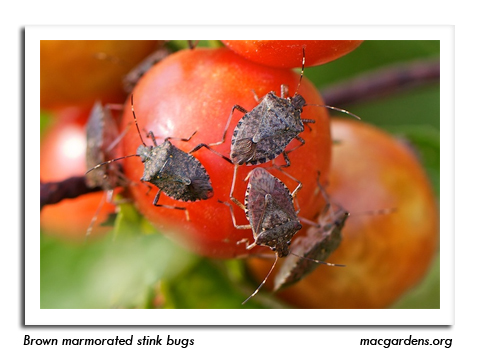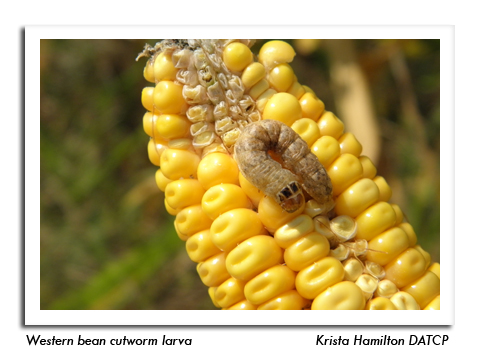
 |
|
|
Looking Ahead
Volume 64 Number 17 Date 08/22/2019 CORN ROOTWORM - Preliminary results of the annual beetle survey indicate populations are mostly low and comparable to last season. District averages thus far range from 0.1 beetle per plant in the southeast region to 0.5 per plant in the south-central area. The state average in 201 fields surveyed as of August 21 is 0.3 beetle per plant, only marginally higher than last year's historically low average of 0.2 per plant. A count of 0.75 or more beetles per plant in continuous corn is considered the threshold which indicates a heightened risk of root damage to non-Bt corn in 2020. BROWN MARMORATED STINK BUG - Late-summer populations are increasing in areas of the state where BMSB is established, and it is particularly important for fruit and vegetable growers, gardeners, and property owners to remain alert for stink bug activity from now through October. Populations in the Madison, Milwaukee and Green Bay areas are large enough that swarming will occur on warm fall days as the stink bugs aggregate before seeking overwintering sites. EUROPEAN CORN BORER - The treatment window for second-generation larvae has closed in advanced locations in southern Wisconsin, and remains open only a few more days in the central areas. Final inspections of sweet corn for egg masses and small larvae are advised before 2,100 degree days (modified base 50°F) have been reached. CORN EARWORM - Late-season migration flights continued this week. The DATCP pheromone trapping network captured 110 moths in 9 traps between August 15 and 21, for a cumulative total of 634 moths since mid-July. The high count for the reporting period was 57 moths at Beaver Dam in Dodge County. The latest activity signals that fresh market and processing sweet corn remains at risk of infestation and should be monitored until harvest. LATE BLIGHT - The UW has confirmed late blight in Adams, La Crosse, Monroe, Portage, Vernon, Waushara and Wood counties as of August 20. According to UW-Madison Vegetable Plant Pathologist Dr. Amanda Gevens, it is critical that susceptible potatoes and tomatoes in close proximity to the counties listed above be treated with a combination of antisporulant and protectant fungicides to limit reproduction of the pathogen and prevent new infections. WESTERN BEAN CUTWORM - Counts have declined markedly at most sites as the annual moth flight period ends. Only 26 of DATCP's 56 traps captured moths this week, with totals at or below 17 moths per trap at all but the Kewaunee County location which captured 55 moths. The cumulative state count as of August 21 is 3,582 moths. This season's moderate flight has likely produced localized damaging larval populations in areas of the state (namely the central counties) that traditionally experience western bean cutworm pressure. -- Krista Hamilton, DATCP Entomologist .jpg)


.jpg)
.jpg)

|
|
|